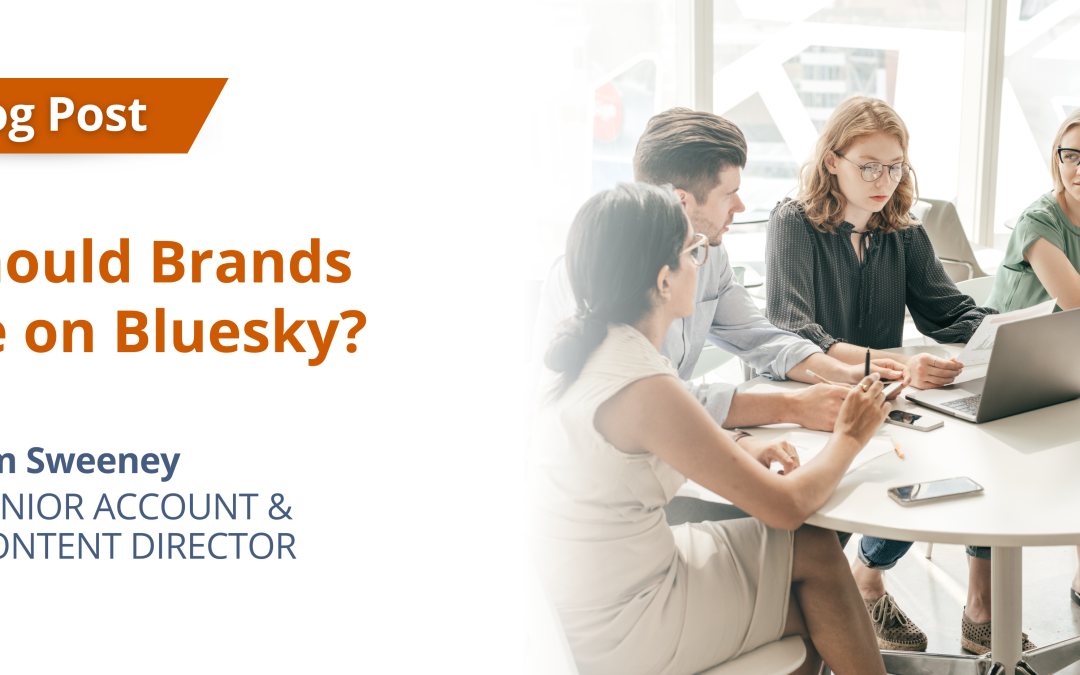
by Morgan Lewis | Mar 5, 2025 | Blog
Now that we’re well into 2025, I thought it would be interesting to look back at the most-read blog posts of 2024. My theory about these popular posts is that they reflect the concerns, curiosities and goals of the larger population of that time … or it could just be our team’s savvy SEO strategies and engaging writing skills that kept readers reading.
Regardless, last year’s most-read posts indicate that visitors were looking for levity, given the many popular articles’ lighthearted nature. This is also understandable, considering that many of us were looking for some relief in 2024 from the nonstop barrage of news about the U.S. Presidential campaign.
Another theme that emerged is that several of you – despite the growth of ChatGPT and other generative AI writing tools – seemed to be looking for writing tips and commentary to improve your content. Hooray for real-life human writers!
Without further ado, the following are the top 5 most-read Amendola blog posts from 2024 (in chronological order).
Top 5 Most-Read Blogs of 2024
- “The Taco Bell Times And The Depends Undergarments Press: Is This The Future Of Local News?” by Brandon Glenn.
This amusing post kicked off the year by first discussing an unfunny trend: the widespread closures of daily newspapers and layoffs of journalists. This topic is close to our hearts at Amendola, given that many of us came from consumer and business journalism before jumping to PR. The post, however, does steer toward levity as Brandon explores what could happen if mega-corporations step in to “save” local newspapers by purchasing naming rights or other such business ventures (which occurred at his hometown’s newspaper). What could go wrong?
- “The Best Rule in AP Style is About Animals with Names” by Brandon Glenn.
Brandon returns to the most-read blogs list with his hilarious take on an obscure Associated Press-style rule about pronouns for animals with and without given names. As a follower of AP style (the most common writing manual in consumer and business journalism) for over 25 years, I cannot remember ever looking up if I should refer to a dog named Rex as “who” or “that” in a sentence. Thankfully, the style guide editors resolved this dilemma, which Brandon whimsically explains. So, which is it? You’ll have to read the post to find out.
- “Reflecting Back, Looking Forward: Amendola Marks 20th Anniversary,” by Jodi Amendola.
Our founder and CEO, Jodi Amendola, has seen it all in health tech: digital transformation, the rise of virtual care, COVID-19, and now, generative AI. Jodi’s vast experience and success are likely why so many blog visitors read her post on the 20th anniversary of the agency she launched out of her parents’ condo in Scottsdale, Arizona. Her secret? Jodi humbly admits that she doesn’t have a crystal ball to foretell the industry’s tumultuous changes. Instead, preparing for the unexpected, staying nimble and building the right team have made all the difference over the last two decades.
- “When Slow is the Way To Go in PR and Marketing,” by Chris Nerney.
Post-author and Senior Content Director Chris has decades of experience in journalism, PR, and marketing content, as well as five years as a standup comic in Boston. His wit shows through in this post about the occasions where speed is more of a risk than a benefit. Although filled with valuable and actionable information, Chris injects plenty of humor in describing situations professionals in our industry will recognize. For example: “…you may be writing about concepts that may be ever-so-slightly outside your wheelhouse. That’s OK – you probably didn’t go to medical school, and your yearslong devotion to Grey’s Anatomy will only get you so far.”
- “The ABCs and the 3 Ps of Media Interviews,” by Grace Vinton.
Our media relations dynamo and health-tech celebrity, Grace Vinton, offers advice on a perennial challenge facing health-tech PR and marketing professionals: media interviews. Grace, who has a hugely popular podcast of her own, presents helpful mnemonic devices in the post for health tech executives to prepare for interviews and tips for crafting memorable and easy-to-understand messages. Her guidance is also relevant for any chat with a potential customer, investor or partner where you may not have the time for a detailed discussion about your company and solutions.
New Year, Fresh Insight
Whether it’s writing tips, messaging advice, or insight into the health tech PR and marketing strategies, you can continue to rely on this blog in 2025 to supply you with relevant guidance. I can’t promise that all the posts will be humorous, but they will surely be engaging and informative. Thanks for reading!

by Marcia Rhodes | Feb 19, 2025 | Blog
A strong partnership with a public relations (PR) agency offers numerous benefits to companies by generating attention and interest that draws in new employees, industry partners, and, most importantly, customers.
More and more companies are realizing the value of PR, as globally the PR market is expected to grow to more than $133 billion by 2027. In the U.S., demand for PR specialists is predicted to grow by about 6% by 2032 (faster than average), according to BLS.gov.
However, achieving stellar PR results requires some upfront efforts to ensure the alignment of goals and objectives between the client and the PR agency. The best PR agency–client relationships are characterized by collaboration, respect, unity, and a mutual understanding of the end goals and expectations.
Following are some tips for successful PR partnerships:
Establish a single source of contact: Designate a dedicated liaison who is accessible and responsive to requests for data and media interviews. The ideal partner shares information on company activities and news proactively and views the PR agency as a partner, not a vendor.
Know your people: Draw up a list of spokespeople, including internal executives and customers who will sing your praises, who can participate in media opportunities, as well as the specific topics they prefer to focus on. When it comes to healthcare media relations, it’s always best to lead with a provider customer than a solution provider.
Create the culture: The brands that realize the most value from PR have established a company culture that encourages adoption of new concepts and strategies. An essential component of this is a leadership team that sees the value of PR and its important role in the marketing mix to drive credibility, recognition, and brand awareness, as well as fueling ongoing online content marketing across integrated PESO (Paid, Earned, Shared and Owned) channels.
Develop a social plan: Social platforms such as LinkedIn offer another avenue beyond traditional media for brands to establish thought leadership and contribute to relevant industry conversations. To get the most out of social media, develop a written social media strategy and guidelines (we can help!) about having an active presence on relevant platforms. It is also a big help to have an executive team and employees who are — or willing to become — social media apostles.
See the big picture: Generating the media interest that will lead to valuable coverage and market attention doesn’t happen overnight. It’s important for clients to have a company-wide understanding that PR is not a “project,” but rather a process that should be integrated into every function of the organization from marketing and sales to product development and human resources.
Other factors that set the stage for a productive PR partnership include having a clear brand voice and message strategy, an optimized website, and a customer relationship management tool with a solid process in place for managing leads. (If you don’t have any of these, we can help get you there!) Ultimately, like all relationships, the PR agency–client partnership is all about taking the time to clearly communicate and understand each other to establish productive and positive collaborations.

by Brandon Glenn | Feb 5, 2025 | Blog
Case studies represent an opportunity for companies to present potential customers with a real-world story of how their products and services helped an actual customer solve a common industry-wide problem.
Whether the customer’s positive outcome involved greater revenue, lower costs, or happier clinicians and patients, a case study enables companies to move beyond talk with prospects to action – as in, “If you take the same action as our customer did, you, too, can overcome the barriers that have been holding you back from accomplishing your objectives.”
Potential customers want to be reassured that they are hiring a vendor that has experience helping companies like them surmount obstacles like those that they currently face. A well-written case study will accomplish just that.
At its most basic level, a case study follows the familiar story arc of “problem – solution – results,” but there’s more to it than that. Here are three must-haves to build better case studies:
Quantified results: The surest way to kill the potential of a strong case study is to include unimpressive or vaguely worded results that fail to clearly illustrate the value of adopting a new solution. Solid case studies require data to demonstrate the improvement of key metrics. While some customers may be understandably reluctant to publicly share hard dollar amounts, many will be more comfortable stating percentage increases or decreases, such as, “reduced costs 10% in the first year of implementation.”
What’s next: It’s easy to remember that a case study highlights what a customer accomplished after adopting new technology, but one less obvious element to include involves next steps. Now that the customer has taken care of its most pressing issues, what are their plans for the future? While it may seem like a small point, including next steps can help potential customers envision a long-term strategy around your product.
The customer’s own words: A customer’s own description of a solution’s impact will always carry more weight than what a vendor says about its own products. Interview some end-users to obtain quotes and insights that detail the difference your product made for them – once again with an eye toward obtaining quantifiable measures.
Case studies can be effective tools for nudging prospects and customers along the next steps of the buyer journey. To maximize their value, be sure to include quantified results, what’s next, and the customer’s own words.

by Jodi Amendola | Jan 22, 2025 | Blog
One of the great pleasures of my job is watching members of the Amendola team – the A-Team – demonstrate their knowledge and expertise about public relations and marketing. I see this during staff meetings, on calls with clients and prospective clients, and in the work the A-Team produces for the many companies we represent. I go to sleep every night knowing I hired a team of senior level experts that truly shine.
Over the past year, A-Team members have offered their collective marketing and public relations wisdom through the Amendola blog. As I look back on 2024, I wanted to share with readers some of the blog posts that resonated most with me. Honestly, I could have made this list three times as long! I urge you to click on the links and check out some of the other Amendola posts. They are filled with actionable advice for healthcare technology companies seeking a competitive edge.
Spotting PR opportunities hiding in plain sight
Healthcare technology clients hire Amendola to help them raise their profiles in an exceedingly competitive business environment. And while many clients envision lavish write-ups in the Wall Street Journal or prominent healthcare media – something we’re all for, by the way! – coverage by smaller news outlets can be useful in building brand awareness among potential customers and investors.
“Though often overlooked, local news outlets can be valuable resources for public relations professionals and their clients,” our Senior Content Director Brandon Glenn notes in this blog post from January. “Whether they are general interest dailies, weeklies, or business publications, these media outlets are often interested in milestone topics that don’t necessarily appeal to trade or national media, such as hiring plans, headquarters’ expansions, acquisitions, and other factors that may affect the local economy.” See the opportunity, seize the opportunity.
Take the trade show by storm
Trade shows can cost healthcare technology companies a lot of money, especially if they have a booth on the show floor. It’s important, then, to get the most out of a trade show – otherwise you’re wasting time and funds that could be used elsewhere.
In addition to providing a forum for education and professional networking, trade shows can enable healthcare technology companies to build relationships with the media. In a February blog post, Account Director Kim Mohr offers some best practices for executives seeking to establish relationships with journalists from a variety of publications and mediums. These include preparing for scheduled interviews, being prompt (the journalist’s schedule will be crammed) and having a clear message (more on that later).
Fortune favors the bold – and creative
Amendola clients want to be noticed by investors and prospective customers. Yet they don’t want to stand out for the wrong things. As a result, many of them fear that expressing a strong opinion or point of view will distract from their message and cost them business.
But as Account Director and Media Specialist Grace Vinton warns in this May blog post, “Healthcare technology companies that hide in the herd and play it safe get ignored.” A far more effective strategy, Grace writes, is to “inject your marketing and PR initiatives with a strong storyline framework that employs passion, humanity, humor, and a distinctive voice.” This can be done through social media, bylines, podcasts, and (as discussed above) speaking at conferences. Humanity sells because we’re all human.
Simple sentences, clear messaging
To build brand awareness and grow revenue, healthcare technology companies need clear, concise messaging. That can be difficult when you’re in the business of applying advanced technologies to complex healthcare challenges.
Still, language that is “direct, straightforward and, above all, clear and free of unnecessary jargon” will pay off in the long run. In an August blog post, Amendola Senior Account and Content Director Jim Sweeney explains, “Keeping it simple means your message will be better understood and your busy readers will be grateful for not having to decipher your writing.” Couldn’t have said it better (or simpler) myself.
Compelling lead magnets
Strong customer leads are the refined fuel of the sales pipeline. Healthcare technology companies can use lead magnets to capture and nurture promising leads by offering value in exchange for their contact details.
The best lead magnets are tailored to your target audience’s needs, deliver the value promised, are easy to consume, and can be readily shared, according to Senior Account Director Janet Mordecai. But that’s just a partial list; read about more characteristics of winning lead magnets in Janet’s October blog post.
Conclusion
2024 was an amazing year. In fact, we are bigger and better now as we are part of the Supreme Group. My crystal ball tells me that 2025 will be even better. The A-Team and I can’t wait to continue working with clients whose technologies will help transform healthcare to save and improve lives. We’re in this together.

by Jim Sweeney | Dec 18, 2024 | Blog
In the days following the Nov. 5 election, former X users flocked to the new social media platform Bluesky. Their descriptions upon arrival made them sound like refugees who’d fled a war-torn country and found sanctuary.
Bluesky, they said, is everything Twitter used to be before Elon Musk changed it to X and turned it into a platform for right-wing disinformation. Bluesky, they rhapsodized, is safe, informative, educational and, well, nice.
The internet could certainly use more niceness, but is Bluesky a place for brands? It depends.
Certainly not if their intent is to advertise because Bluesky does not accept ads and its owners say they intend to keep it that way. Of course, that was Reddit’s policy once, too. According to the company, it plans to charge fees for users who create custom domains on the site and will eventually sell subscriptions for higher-quality video uploads or profile customizations like colors and avatar frames.
But it’s hard to just ignore Bluesky. Its growth has been phenomenal. Since opening to the public in February, it has grown to over 25 million users. Post-election, it has been attracting nearly 1 million new users a day. It has been the most downloaded free app. Naturally, those numbers have drawn the attention of brands.
Its vigorous policing of content and blocking of racist, hateful and offensive material also makes it attractive to brands. Of course, that degree of control will become harder to achieve as the number of users rises.
Some brands (Duolingo, Hulu, Netflix) are posting organically while others like Red Bull and Xbox seem to have secured handles, but haven’t begun posting. Bluesky does not yet have a verification process, so trolls also are snatching up some brand handles, which is an argument for consumer-facing brands to, at minimum, control their names. For now, though, the platform is mostly user-generated content.
Besides the advertising ban, brands face another challenge on Bluesky. The platform lets users design and control their own feeds, which means they can filter out anything they don’t want to see. For users, it means a cleaner experience; for brands, it means fewer eyeballs. They will have to work to earn engagement with users who might not welcome their presence on the platform.
Politics aside, Bluesky differs from rivals X, Threads and Mastodon in another significant way. It’s an open platform with an API that is accessible to developers, which means any decent programmer can use the same architecture to build new interconnected sites, across which they can share content.
There is also a possibility that Bluesky becomes a de facto platform for liberals and progressives while X continues its conservative MAGA trend under Trump buddy Musk. If that happens, brands and thought leaders would have to decide whether it’s the audience they want to reach and whether joining Bluesky would tag them as progressive, which could cause a backlash (see Bud Light).
Brands and thought leaders that left X over unhappiness with its new direction and objectionable content shouldn’t feel compelled to join Bluesky right away. They can rely on Facebook, Instagram, TikTok and, of course, LinkedIn for messaging (see some best practice tips here.) Exceptions might be those who want specifically to reach a progressive audience or to signal their displeasure with the direction of X.
Marketers should, however, keep an eye on Bluesky to see if it continues its growth and makes any changes to be more accommodating to brands.
Below is a quick rundown of some Bluesky features. Keep in mind that the platform is still evolving, and these can change:
- Text posts have a 300-character limit.
- Users can self-label their posts, especially those containing sensitive content.
- “Starter Packs” are curated collections of accounts designed to help users find others with similar interests. One click allows users to follow or block all accounts within the pack.
- Users can customize their feed and viewing preferences.
- It includes an in-app music and video player.
- Bluesky offers custom domains, allowing users to personalize their handles with their domain names.




